KK-stiftelsens profilsatsning
KK-stiftelsens profilsatsning
KK-stiftelsens profilsatsning
You also want an ePaper? Increase the reach of your titles
YUMPU automatically turns print PDFs into web optimized ePapers that Google loves.
<strong>KK</strong>-<strong>stiftelsens</strong> <strong>profilsatsning</strong><br />
All three research profiles have been actively involved in strengthening their<br />
environments. The mid-term evaluation functioned as an important push to<br />
integrate different projects and labs, clarifying the profile’s identity, and to<br />
diversify the financing portfolio to make the economic situation less<br />
vulnerable. In general, the profiles have succeeded in obtaining financial<br />
support from a wide circle of financiers.<br />
It appears that the main risk is that the research environments do not take,<br />
or are not able to take, the final step towards world-class research. They are<br />
all ‘close to the top’, but since it is sub-areas or separate researchers who<br />
have gained international status, not the environment as a whole, scientific<br />
excellence is still to be achieved.<br />
1.2 Meta evaluation<br />
In addition to the final evaluations mentioned above, FBA has also been<br />
commissioned to perform a so-called meta evaluation. The purpose of this is<br />
to bring together the evaluation results from each profile and identify<br />
possible generic learning. The learning may be used to formulate more<br />
efficient strategies for developing sustainable and competitive research<br />
environments.<br />
FBA has translated the Knowledge Foundation’s criteria into a couple of<br />
evaluation models that, taken together, provide the opportunity to learn<br />
about strong research environments, in terms of results and methods of<br />
working. The meta evaluation discusses the two aspects in terms of ‘dual<br />
excellence’ and ‘proactive ability’. The following bullet points summarise<br />
our findings.<br />
1.2.1 Findings<br />
Achievements<br />
• The research environments ‘produce’ two kinds of benefits that<br />
influence each other alternately. The benefits form intertwined<br />
relationships between academia and industry, contributing to the<br />
environment’s strength and sustainability.<br />
• The better the players’ prerequisites, expectations and logics are<br />
allowed to join, the greater the extent of intertwined relationships. And<br />
thus a better potential for (positive) dependence between the players.<br />
Such a dynamic environment increases the attractiveness to financiers<br />
and potential recruits.<br />
• The research environment itself should be regarded as the result, not<br />
individual projects or deliveries as PhDs, publications or patents. It will<br />
focus on relationships and skills and the development of trust and<br />
8



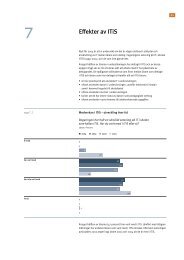
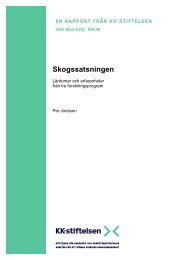
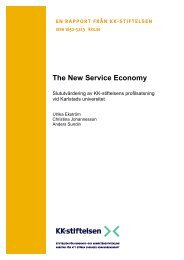
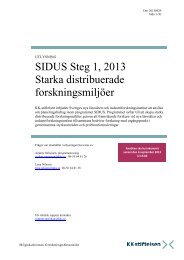
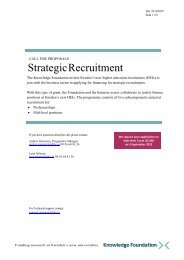
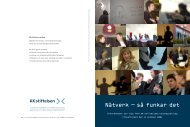
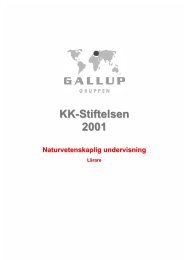
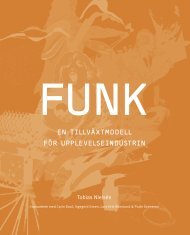
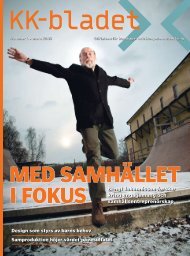

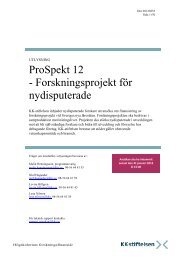
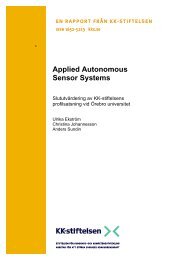

![[Klicka här och skriv titel] - KK-stiftelsen](https://img.yumpu.com/23861299/1/184x260/klicka-har-och-skriv-titel-kk-stiftelsen.jpg?quality=85)